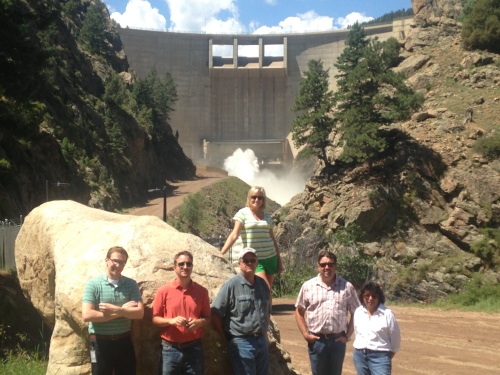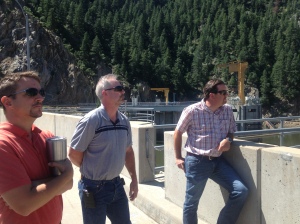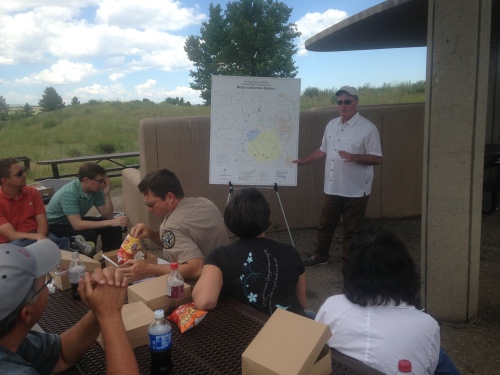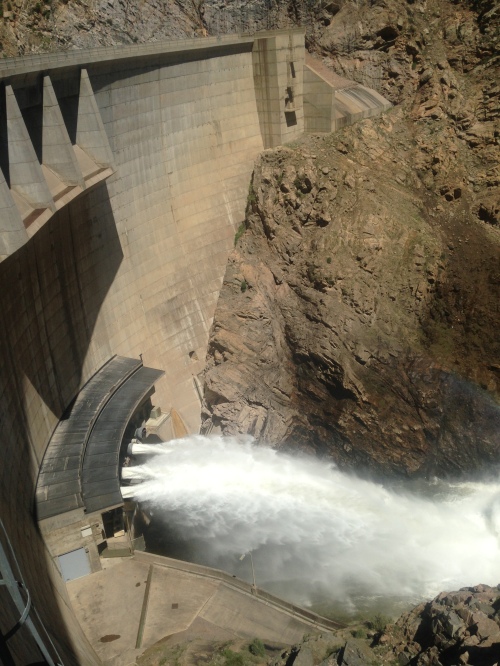By Kristin Maharg
As a professional working to educate Coloradans on the value of water resources, I’m drawn to public process. How are we exposed to civic issues, why should we care about community planning and what are meaningful ways to participate in decision-making? These are powerful questions that can lead to a more engaged citizenry and hopefully, a more sustainable future. So when the opportunity to serve on Denver Water’s Citizens Advisory Committee came to me six months ago, I was eager and honored to dive in.
The CAC was created in 1978 as a result of public concern about growth issues and environmental impacts, forming a citizens group charged with representing public interests. There are ten of us from the West Slope, city and suburbs of Denver, amongst others, that advise the Board of Water Commissioners on matters of citizen participation. One of our biggest topics this year has been Denver Water’s new rate structure stakeholder process. I had no idea how involved and complicated this could be! Now when I open my water bill, I appreciate what it all means for a utility’s cash flow, conservation incentives and customer affordability.
Instead of our typical monthly meeting, in July the CAC went on a full day tour of Denver Water’s East Slope infrastructure. How nice it was to sit back and let someone else direct a water tour! As a record-breaking wet spring, I wondered how the challenges of a water provider would be different than in a drought year…
After stopping at the historic Kassler Treatment Plant where water passed through giant open sandboxes to filter debris, we traveled up Waterton Canyon where families of bikers, hikers and anglers enjoyed the beauty of the South Platte River… while looking out for bighorn sheep! At the top we reached Strontia Springs Reservoir, which serves as the final vessel for raw water supply distribution to Marston and Foothills treatment plants. In somewhat of an art deco design, Strontia was spilling for another record of 56 days this year… all that water unusable to Denver Water, closing the canyon below for safety, blowing out the wooden High Line diversion and ultimately filling up Chatfield Reservoir. Later we’d have lunch around those flood waters and get a glimpse of what Chatfield Reallocation will look like as the water level increases from 5332 to 5344 feet.
The CAC also talked about emerging water quality issues on our field tour. Most fascinating was the piece about managing flows for fisheries 100 miles up the watershed between Spinney Mountain and Elevenmile Canyon reservoirs. Trout prefer low flows when they spawn in the spring, which is clearly not when our rivers are low. Strontia Springs is apparently one third full of sediment as a result of the Buffalo Creek and Hayman fires, resulting in operational and treatment challenges. Interestingly, when those pine needles burn, manganese is released as a by-product. Down at the Foothills Treatment Plant, we met with a modest yet enthusiastic staff, who turn that murky runoff into crystal clear drinks. Another treatment challenge is the sheer scope of their distribution system… keeping out pathogens for the two weeks it takes for a drop to arrive at DIA.
Whatever city or watershed you consider yourself a citizen, the key take-away for me as a CAC member is to promote cooperative and creative solutions for our future water demands. When our water utilities explore regional planning, direct potable reuse and more aggressive rate structures – all the while considering the technical and legal constraints of our water right system – we have a role as consumers of that resource to understand the implications of those solutions. What will it take to ensure healthy water supplies for all users? What are you willing to do to bring water to your tap? Share your thoughts and ideas!





 Print
Print
Reblogged this on Coyote Gulch.